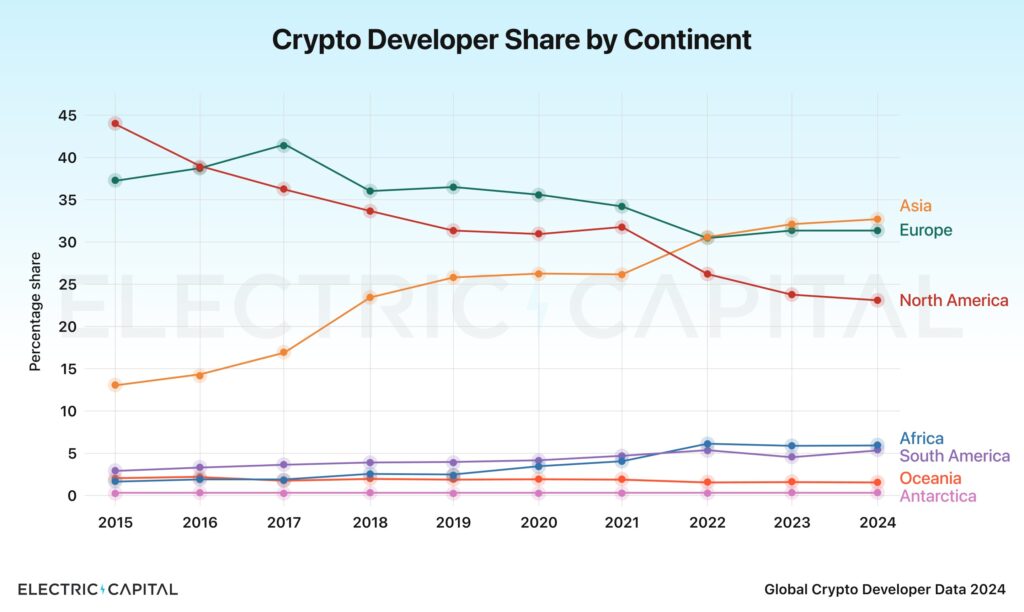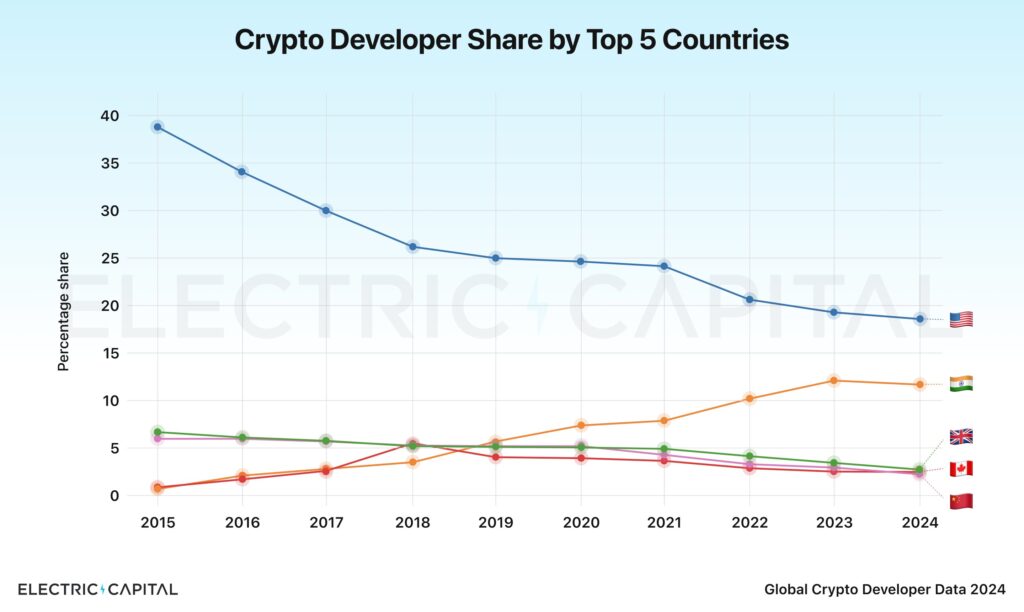The geographic distribution of crypto developers frequently indicates the regions most positioned to drive future blockchain innovation.

A recent report reveals that Asia has surpassed North America as the leading region for cryptocurrency and blockchain development talent.
As of 2024, Asia accounts for 32% of global cryptocurrency developers, up from 13% in 2015, positioning it as the top region for developer expertise in this sector.
In contrast, North America’s developer share has halved, dropping from 44% in 2015 to 24%, according to Electric Capital’s Maria Shen, who shared in an Oct. 30 X post:
“Asia is now #1 for crypto devs. The US is losing market share. Crypto impacts every state in the US – crypto should be non-partisan.”

The geographic concentration of crypto developers often indicates which regions will likely drive future blockchain advancements.
A rise in regional developer numbers suggests blockchain technology’s increased adoption and potential growth in consumer applications.
U.S. Maintains Top Spot in Total Crypto Developers
While 81% of blockchain developers are based outside the U.S., it still boasts the highest global developer count.
The U.S. is home to 18.8% of all crypto developers, followed by India with 11.8% and the U.K. at 4.2%.

Despite the U.S. leading in total developers, its share has dropped by over 51% since 2015, even as the industry has grown.
Within the U.S., 22.3% of developers are based in California, while New York accounts for 13.7%. A significant 64% of U.S. developers live outside these two states.

The findings are based on an analysis of over 200 million GitHub commits across 350,000 crypto-related repositories, with geographical data gathered from more than 110,000 developer wallets reporting their locations.
Interest in cryptocurrency has been on the rise across Asia. In South Korea, the number of crypto investors surged by over 21% in the latter half of 2024, raising the operational profits of the top 21 centralized exchanges (CEXs) to over $4.2 billion, marking a year-on-year increase of 106%.
